Trees help communities to survive in times of drought
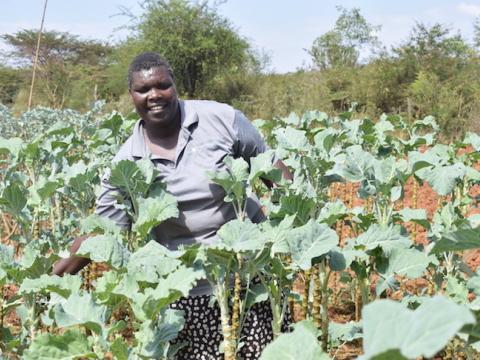
By Sarah Ooko, World Vision Senior Communications & Media Officer, Kenya
The sun is blazing hot at a remote village in Baringo County, Kenya. Most farms are bare as the heat has caused plants to rapidly dry up.
But crops in Rebecca's farm are still alive. Despite the heat, the kales planted stand tall and strong, with healthy looking broad leaves that have maintained their vibrant green colour.
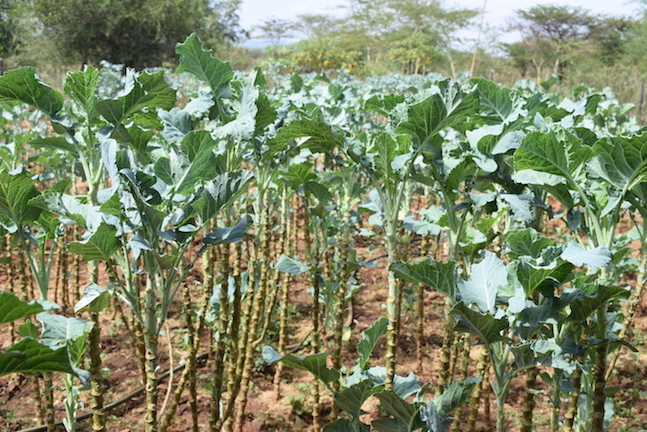
"It's the dry season here but I am happy that I still have enough vegetables and other food crops to feed my family," says the mother of eight.
"And because only a few people have vegetables during dry seasons, this enables me to sell mine at a good price and make profit since the demand is higher than the supply.”
Rebecca attributes her success in agriculture to the different types of trees on her land. The trees have enabled her to cope effectively with the adverse effects of climate change such as increase in temperatures that lead to long dry spells.
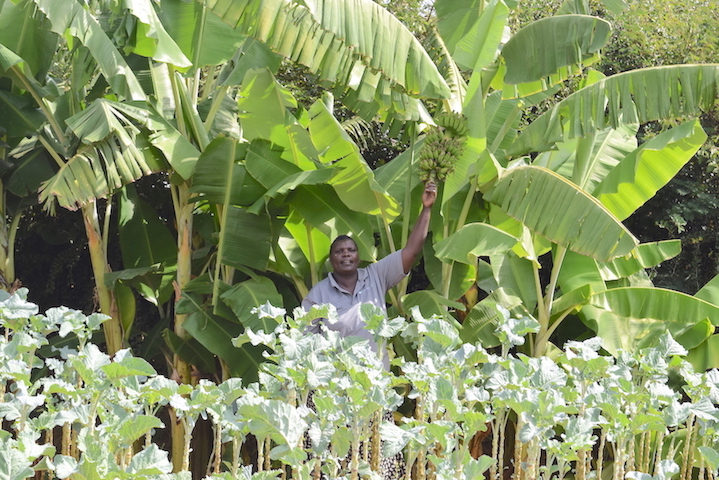
Previously, her land was largely bare as she had cut down the trees that had been growing on it and the remaining few were poorly managed.
But all this changed after Rebecca and other selected farmers in her community were trained by World Vision on a low-cost tree revival and a growth technique known as Farmer Managed Natural Regeneration (FMNR).
"Now I have many different types of trees in my land and they have really helped me to boost crop and livestock production," she says.
The trees surrounding the farm provide a shade that cushions crops from the harrowing effects of the hot sun, which can cause plants to easily dry up.

In addition, Rebecca always ensures that the leaves shed by the trees, as well as the pods do not go to waste.
"I use them for mulching which also helps in cushioning the soil from heat, retaining soil moisture and keeping weeds away," she says.
"Thanks to the lessons from the training, I also know that as these leaves decompose, they also fertilise my soil by adding nitrogen and other nutrients that crops need," adds Rebecca.
In the past, she notes that crop yields from her farm were unsatisfactory due to constant soil erosion from surface water runoff or flooding that occurred during rainy seasons, which would rob the land of its fertile topsoil.
The trees have helped to address this challenge by using their robust root system to bind soil to the land and prevent it from being carried away by excess rainwater.
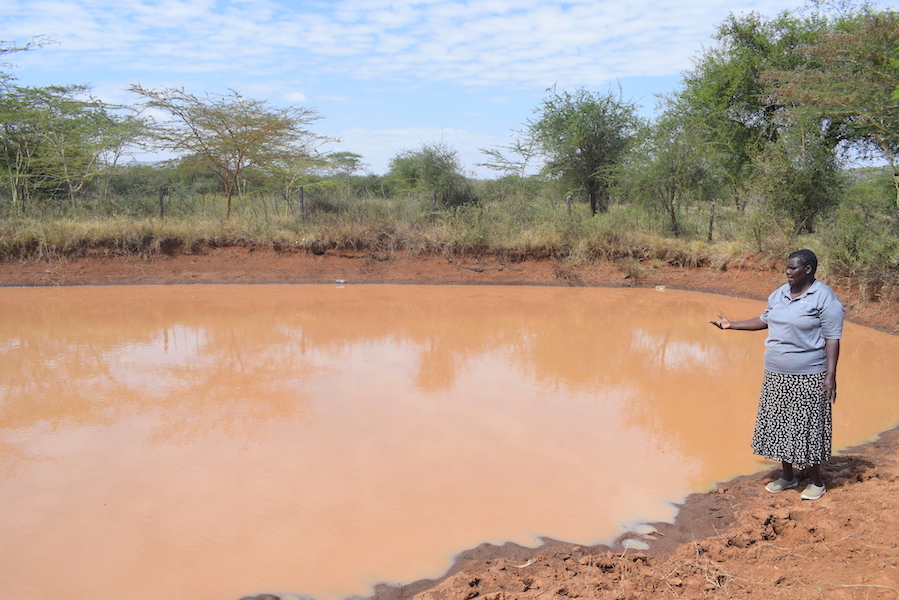
The trees have also provided a good catchment area for the earth dam that Rebecca dug, which harvests water during rainy seasons and holds it over long periods.
"This is the water that I use to irrigate my crops during the hot and dry seasons. The trees protect the dam from drying up fast by preventing siltation, which happens when eroded soils fill up the dam," she states.
Aside from crop farming, Rebecca has numerous tree types such as acacia, leucaena and pine species that provide nutritious fodder to livestock.
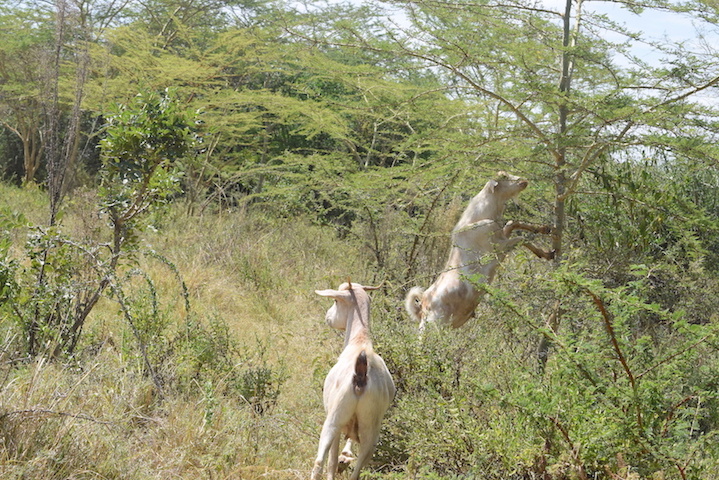
"These are drought tolerant crops that my cows and goats can rely on during the dry season to get sufficient feeds that increase their meat and milk production," she says.
The trees have also promoted the growth of grass in Rebecca's farm, providing more fodder for the livestock.
During the rainy seasons, when the grass is in abundance, she harvests and uses it to make hay, for the goats and cows to feed on during the dry season.
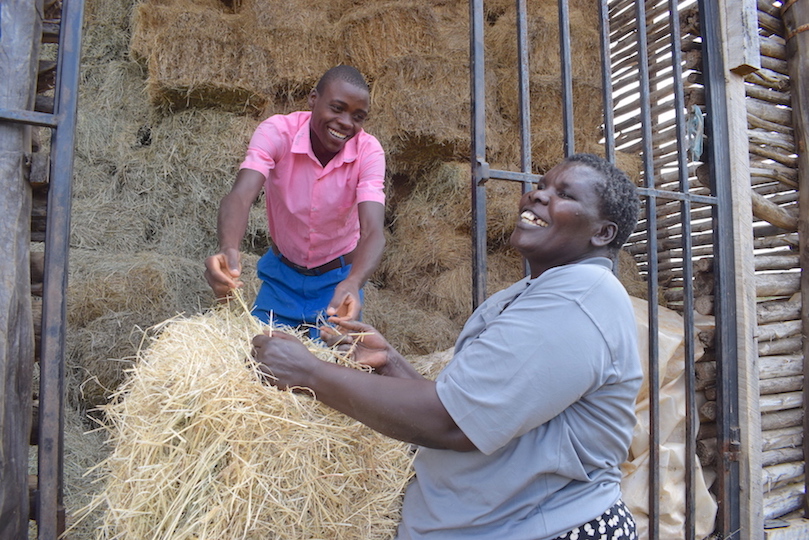
"I no longer worry about my livestock suffering and even dying when we go through long drought periods. I usually have enough hay for them and the fodder trees also come to my rescue," says Rebecca.
Her 15 year-old son Denis notes that the increased crop and livestock productivity resulting from trees has enabled his parents to meet family needs.
"Me and my siblings have never been sent away from school due to lack of school fees. We also enjoy a balanced diet at home that keeps us healthy. When we need new clothes, they can afford to buy us some too."
Rebecca and her family are among the many beneficiaries of the FMNR technique in Kenya. According to a 2016 study conducted by World Vision, over 40 percent of farmers practicing FMNR such as Rebecca reported an increase in crop production as a result of growing crops with trees. These households had been grappling with food insecurity or shortages for a long time.
"We are seeing the change in our communities and this makes us really happy," says Rebecca.